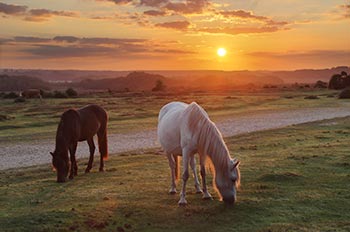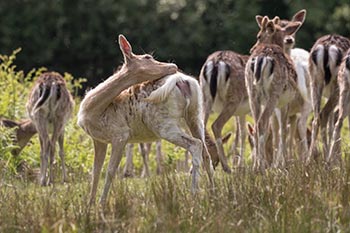New Forest wild flowers - an introduction

Wild flowers brighten even the dullest day. Snowdrops in the midst of winter tell of better weather to come, whilst lesser celandines are one of the first signs of spring. Even late-flowering November blooms help hold at bay the prospect of shorter days and longer, colder nights. And of course, all the wild flowers in-between have their own special magic.
Amongst them in the New Forest are some real corkers. There’s the wild gladiolus, which in Britain is found nowhere else, and the tiny bog orchid is almost as rare. Then at the other end of the abundance scale are the heathers, plants that gloriously carpet the mid and late-summer heaths with extravagant colour.
These pages provide an overview of some notable New Forest wild flowers. Many are common and widespread; others take a bit of finding. Most, as will be seen, have been used in herbal medicine, a countryside art based on natural ingredients that pre-dates today’s modern pharmaceutical industry, and many would say, heals just as effectively.
Find out more about New Forest wild flowers
Getting started
Some notable New Forest wild flowers
More links
Search this site

Sadly, 58 animals were killed - 35 ponies, 13 cows, 8 donkeys and 2 sheep, whilst a further 32 were injured - 3 pigs, 9 donkeys, 11 cows and 9 ponies.
(Forty-three accidents occurred in daylight, 15 at twilight and 101 in the dark. Twenty-seven accidents were not reported by the driver involved).
Here's just one horrific example - Three donkeys killed in collision with van at notorious New Forest blackspot (Advertiser and Times)
Sika deer continue to engage in rutting behaviour, and will do so until December.
Pigs seek out the remains of the acorn crop.
Beech leaves are transformed into a magnificent mosaic of glorious reds and golds. Other deciduous trees, too, take on an autumnal cloak before their leaves fall.
Dragonflies can occasionally be seen on the wing on bright days early in the month.
December
Foxglove leaves survive the winter at ground level, and offer the prospect of colourful summer blooms to come.
Redwings and fieldfares, autumn and winter visitors, gorge on haws and holly berries.
Great grey shrikes and hen harriers hunt over the heaths and other open spaces.
Honeysuckle by the end of the month often shows welcome signs of new growth.



